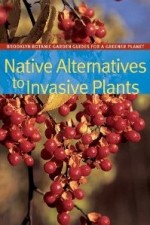 Concern for the environment has triggered great interest in invasive plants as well as native plants that make good garden companions. This book deals with both and provides information so that you can make informed decisions for your garden. It describes the native plants that make good substitutions for the invasive ones based such characteristics as flowers, fruits, foliage, fall color, and ease of care.
Concern for the environment has triggered great interest in invasive plants as well as native plants that make good garden companions. This book deals with both and provides information so that you can make informed decisions for your garden. It describes the native plants that make good substitutions for the invasive ones based such characteristics as flowers, fruits, foliage, fall color, and ease of care.
Opening sections of the book deal with the nature of the problem involving invasive plants and why using native plants offers a potential solution. Definitions of “invasive plant” and “native plant” are given and the rationale for substituting one for the other explained.
The bulk of the book is devoted to an encylclopedia of 100 invasive plants organized by plant group: trees, shrubs, vines, herbaceous plants, and grasses. Each invasive plant is represented by a picture with common and botanical names, and the current invaded range. One to four alternatives are suggested each with a picture and description. Information is given on native habitat and range, hardiness zones, ornamental attributes and uses, and growing tips. An insert gives the attributes of the alternative native plant at a glance so, for example, we can quickly learn that Showy fleabane(Erigeron speciosus) is a low, clumping perennial with flat blue flowers, and a long bloom season. Reading the text we find more detailed information such as its tendency to self-seed, and its need to be free of competition as well as its light, soil, and moisture requirements. All of this information is important in deciding if a specific native plant has potential for your particular garden.
At the end of the book a list of invasive garden plants is given by botanical name with common name, and the states where they are invasive. The list is a quick way to check on a plant and makes interesting reading on its own. A list of books and websites on native plants as well as invasive plants rounds out the presentation.
This book is a great introduction to a timely subject and can generate a lot of enthusiasm for native plants. It is not an identification manual and gives very little information on the invasive plants. The emphasis is on presenting attractive native plants that people can choose instead of potentially invasive ones so that the threat of harmful plants is reduced.